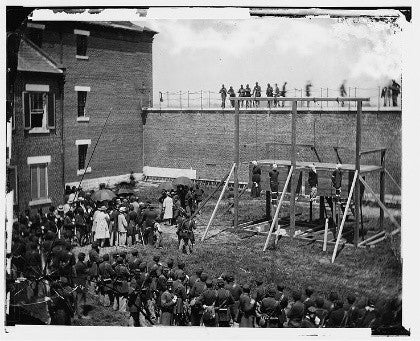"I think photography is one of the undervalued areas of collecting, but the market has started to move in the last 12 months..."
So said Paul in last week's newsletter, and he believes the collectible photography markets are full opportunities for collectors in 2010.
What's more, the markets offer you endless variety - from the iconic (like Richard Avedon's mesmerising portrait of Marilyn Monroe), to famous art or important moments in history.
 Alexander Gardner (1821-1882) |
In terms of the latter, there have been some big photographic sales results recently - including a number of sales featuring the United States' best-loved president.
In January 2010, a photograph of Abraham Lincoln sold for $103,500. The auction estimate was just $8,000-12,000.
The photo was special as it featured Lincoln in a full length, standing pose. Remarkably there are only 119 photos of Lincoln known to exist and just 24 of these feature him standing up.
Given this rarity, Lincoln photographs are always vital when they crop-up at auction - and there is a good chance the image in question was taken by a man called Alexander Gardner.
Gardner (1821-1882) was originally from Scotland, where he was owner and editor of the Glasgow Sentinel newspaper.
However, it was a visit to the Great Exhibition (the famous 19th century international fair of industry and culture which ran during 1851) that sent his life in a new direction.
There, at the fair in Hyde Park, London, Gardner saw the photography of American Mathew Brady which sparked his interest in the subject.
 Gardner's cracked glass portrait of Abraham Lincoln, widely considered to be the last photograph taken of the president before his death |
Following his move to the US, Gardner initiated contact with Brady. He eventually came to work for the American photographer, even managing his New York gallery.
During this period, the Scotsman steadily built his own reputation as a portrait photographer. Around the same time, Abraham Lincoln became President, while the threat of Civil War brewed...
From his base in New York, Gardner was in an ideal position to capture these events on camera. His famous works from this time include visages of soldiers leaving for war.
Brady had an idea to photograph the Civil War; and Gardner's relationship with the then then-head of intelligence, Allan Pinkerton, was key in communicating Brady's ideas to President Lincoln.
Pinkerton soon recommended Gardner for the position of chief photographer, and he later became a staff photographer under General George B McClellan, commander of the Army of Potomac.
Eventually, Gardner parted ways with Brady - possibly down to the former's insistence that all of his employers' photographs were attributed to 'Photographed by Brady' (thanks to which Gardner's images are still mistaken as Brady's to this day).
In November 1862, Lincoln dismissed B McClellan as commander of the Army of Potomac and Gardner's role as chief army photographer gradually diminished.
 The execution of the Lincoln assassination conspirators, July 7, 1865 |
Photography assignments at the Battle of Fredericksburg and following General Joseph Hooker followed, while Gardner and his brother James opened their own photography studio in New York. There employees included many of Brady's old staff.
With an illustrious portfolio and career under his belt, and friends in high places, Gardner's legacy would gain a whole new significance in 1865.
It would be Gardner who took the last-ever portrait photographs of President Abraham Lincoln prior to his assassination four days later on Good Friday, April 14.
 The 'Gettysburg Portrait': a head-on photograph of Abraham Lincoln taken on November 8, 1863 |
Thereafter, the Scotsman and his camera were present at Lincoln's funeral. He was also the only photographer allowed the public hanging of the President's assassination conspirators.
Gardner's photographers would later be translated into woodcuts for publication in Harper's Weekly, the latest in a long line of important historical moments captured by the man.
Today, Alexander Gardner remains best-remembered for his images of the American Civil War, and his photography forms a crucial piece of President Abraham Lincoln's legacy.
In the above video, expert Daniel Weinberg of the Abraham Lincoln Bookshop, Inc, presents a short and fascinating documentary about Gardner and examines some of his most important photographic images.
Meanwhile, Paul says that the photography market is clearly picking up - and there are a number of rare and valuable pieces on the market which are ideal for you to begin, or expand, your collection.
- Learn how you can get pleasure and profit by investing in Old Masters and 19th Century artworks
- Click here for all the latest Art news
Join our readers in 183 countries around the world - sign up for your free weekly Collectibles Newsletter today






